BMW Tries to Picture M Division's Future, Says No Cap on Power
A lot of people gripe about BMW losing its edge. Formerly reserved for the greatest performance vehicles in its lineup, the M designation has migrated to encompass a rather large subset of the BMW fleet. While this has undoubtedly helped the brand boost its sales for years, it also muddied the waters of what constitutes an M.
In the past, BMW’s M vehicles denoted a marked increase in horsepower and real-world performance. Now they’re intermixed with M Sport trims that split the difference between standard fare and bonkers M in terms of output. And they haven’t been turning up the dial lately. In fact, the performance division of all German automakers seem to have slowed down on maximizing performance while the core business prioritizes fuel efficiency and electrification — largely because it’s expected of them by regulators.
It may not be so cut and dried. BMW CEO Markus Flasch has taken a keen interest in the M division, saying “we have to be very careful to preserve what M stands for” while evolving the brand. More recently, he said the automaker had no intent to cap output to appease anyone, claiming that the company’s performance arm has to think carefully about the future.
Aston Martin Abandoning AMG V8 for Homegrown Hybrid V6 Turbo
Back in 2013, Aston Martin signed a deal with Daimler to supply the next generation of its performance vehicles with Mercedes-AMG engines and electrical systems. That arrangement is now coming to an end, as AMG has decided to replace its 4.0-liter V8 with a hybridized four-cylinder unit that’s more efficient. While the older Mercedes-sourced mill will linger in Aston Martin’s Vantage, DB11, and DBX luxury crossover, the manufacturer will eventually need to find its replacement.
Fortunately, it already has a motor in mind.
Daimler CEO: 'Streamlining the Portfolio' Necessary for Mercedes-Benz
Still in the midst of a $1.4-billion restructuring plan that aims to cut 10 percent of its workforce, Mercedes-Benz is reconsidering what its product lineup should look like moving ahead. While most of the doomed models will be chosen due to lackluster demand (e.g. X-Class pickup) plenty will be nixed as a result of tightening emission laws. Mercedes parent Daimler issued two profit warnings in 2019 after the luxury brand was fined $960 million in an emissions-cheating settlement. Like many automakers, it was also hemorrhaging cash through its investments in electrification.
An apt analogy for the automotive industry’s stampede toward EVs would be lemmings hurling themselves off a seaside cliff — but not because of the popular misconception that the critters are intentionally committing mass suicide. When lemmings collectively off themselves, it’s the result of migratory behavior gone awry. They simply bunch up and move in a singular direction, largely unaware of the consequences.
Jeep's Grand Wagoneer Fast Approaching
Poised deliver a super-sized sport utility vehicle to a brand that doesn’t have anything in its lineup to compete with the likes of the Chevy Suburban, Ford Expedition or their more-premium alternatives, Jeep’s returning Grand Wagoneer is probably about a year from entering production. Eager to check on Jeep’s progress, our sister site AutoGuide spoke with brand head Jim Morrison this week.
Most of the interview centered around the new Gladiator Mojave and how important it was not to taint the Jeep brand by forgetting what it’s supposed to represent — getting groovy off the pavement. Morrison also touched on the Wagoneer, however, hinting that we’ll get our first official taste very soon.
Ford Job Posting Mentions 'Mustang S650' Launching in 2022
Ford Motor Co. may have accidentally given away the launch date of the next-generation Mustang. Last month, the company issued a job posting in Flat Rock, Michigan for a “Wind/Road Noise and Air Leakage Plant Vehicle Team Engineer” who would see off the current model before becoming “the final sign off on the Ford 2023 Mustang S650 vehicle program.”
The current ‘Stang uses the internal code S550 for factory identification, so the S650 designation make a lot of sense for its successor. No one had to break out the Enigma machines and put in weeks of hard work to crack that code. The listing makes it clear as day that the position will involve shoring up the next Mustang until it’s airtight and ready for customers in a couple of years.
Nissan and Renault Chief Engineers to Meet, Rekindled Joint Projects on the Agenda
Anybody with more than a casual interest in the automotive industry will tell you the relationship between Nissan and Renault is falling apart. Even the alliance’s founder, executive-on-the-run Carlos Ghosn, says it’s on the cusp of going under. But existing employees have tried to be a little more optimistic, acknowledging that the business partnership has become strained while making suggestions to correct its course.
One plan involves pushing more collaborative projects, which is one of the main reasons for forming an industrial alliance. Renault Chairman Jean-Dominique Senard has already said both sides are committed to making the partnership succeed, citing joint projects as a primary focus. Alliance engineers will meet in Japan at the end of January to discuss new development programs — and attempt to revive a few that fell by the wayside.
Rumor Mill: Next Nissan Z Car to Go Retro?
While it still makes appearances at tuner events and car shows, the Nissan 370Z has roughly the same marketing heat as a pair of secondhand shoes. Last year, Nissan only moved 2,384 in the United States, with another 701 being sold in Europe — suggesting the decade-old (albeit fun) coupe may have outlived its usefulness years ago.
Its successor remains elusive, but persistent rumors claim Nissan is working on something to replace the venerable Z. Despite the manufacturer withholding any kind of confirmation, details leaked from dealer meetings suggest the brand is going with a heritage-inspired look, tapping vintage Z models for the design.
More Expensive, Less Practical: BMW Debuts Luxury I3 'Urban Suite' at CES
BMW will debut a new version of its very green i3 EV at the Consumer Electronics Show (CES) next week. The compact hatchback has been reimagined for the future — and BMW’s future is one of less usability and much greater expense. You’ll need hired help.
Report: Dodge Durango Mild Hybrid to Manifest in 2020
Despite the current-generation Dodge Durango seemingly having been put into production immediately after the solar protoplanetary disk focused enough cosmic debris to assemble our humble little planet, it still moves in decent volumes in the United States. Officially in service since MY2011 (a little more recent than previously stated), sales of the 3rd-gen Durango are still going strong near the end of its life cycle. Deliveries run about 65,000 per year. That’s roughly the same annual volume it’s had since a mild refresh in 2014, and rather impressive considering the model has gone largely unchanged — save for a few performance-focused updates in its later years.
Unfortunately, this heavyweight doesn’t offer idyllic fuel economy. It’s decent for a vehicle with a curb weight between 4,500 and 5,500 pounds, and I’m routinely impressed with the highway miles Dodge manages to eek out from its big V8s, but it’s not ambitious in an era where maximizing mileage is an almost mandatory pursuit. The best the Durango can muster is 19 city/26 highway with its entry-level Pentastar V6.
That is, until the mild-hybrid variant arrives in 2020.
QOTD: Pass the Fromage?
“How can anyone govern a nation that has two hundred and forty-six different kinds of cheese?” – Charles de Gaulle
I have a friend, one whose living room is decked out in red shag carpeting, who often jokes that his tastes in fashion and other trappings of life tend to straddle the line between respectable and… over the top. Cheeseball, in other words. Many times I’ll find myself suggesting, in that delicate manner long-time friends are so good at, that perhaps he’s teetered off that fence and fallen solidly on the wrong side of it.
In the auto realm, cheese is more than ever relegated to the aftermarket, but perhaps OEMs haven’t left this dairy product entirely in the past?
Infiniti Explains Brand's Future Product Strategy, Design Language
Celebrating 30 years of existence, Infiniti announced it was time for a sea change this week. While sales have improved since the recession, last year saw a modest decline in volume that carried over into 2019 in a big way. Year to date, Nissan volume is down 6 percent, with Infiniti posting a 17.1-percent loss — we discussed this earlier in the day, if you’re interested.
Most of this saga is occuring in the United States, where Infiniti sources the bulk of its sales. China and Europe are footnotes for the manufacturer. Yet Infiniti would very much like to improve its global appeal, so it’s banking on EV adoption as being the next global consumer craze.
Considering how many countries are embracing stringent emission goals, Nissan’s premium arm could be making a wise choice. However, the U.S. hasn’t been quite so eager to push (or embrace) automotive electrification — meaning Infiniti could be endangering the one market that’s keeping it afloat. Unfortunately, the status quo doesn’t seem to be working, either — encouraging the automaker to adopt alternative powertrains and design cues in the coming years.
Opinion: A Mustang-inspired EV Spells an End to the Traditional Mustang
Yesterday, TTAC reported on a leaked video (quickly confirmed by Ford) that showed an all-new “Mustang-inspired” model due for debut in November. A sleek, four-door CUV appears on the screen. Highlighted in silhouette, its design represents so many familiar Mustang cues. It’s the Mustang of the future, and it’s a future that will be electric and have four doors.
Jaguar Land Rover Less Certain About Battery Powered SUVs in 2019
Despite delivering what could be considered a desirable premium EV with the I-Pace, Jaguar Land Rover admits it’s not entirely sold on the idea of electric sport utility vehicles. Due to their size, SUVs and crossovers are inherently heavier than traditional sedans — placing them at odds with the goal of maximizing efficiency.
More mass means diminished range. While this can be offset by a manufacturer installing larger battery packs, that increases costs and ultimately adds more heft to the single heaviest component in an EV. Large electrics bring other issues to the engineering table, too.
“The larger the vehicle the larger the aero challenge. If you’re not careful you end up with such big batteries and you make the vehicles so heavy that as you race down the autobahn the range disappears,” Nick Rogers, JLR’s head of engineering, told media at the company’s revamped engineering and design center in Gaydon, England.
QOTD: Trouble With Words?
Yesterday, the illustrious and quite tall Matthew Guy asked about the most linguistically pleasing model names. I tossed out the AMC Ambassador as a model that rolls off the tongue in a flood of satisfaction.
AMC Ambassador — it’s like one of those old, alliteration-addicted British airliners like the Bristol Brabazon or Vickers Vanguard. Actually, one airliner to roll out of the UK at the time was the Airspeed Ambassador, so AMC’s biggest offering had a friend on the other side of the pond.
While we’re not here today to talk about names per se, we are about to delve into wordplay again. What automotive term gets under your skin?
Audi Will Continue Pruning Its Product Portfolio
You might not have noticed but Audi has been quietly reducing the complexity of its lineup by eliminating certain content combinations, often in select markets. Here, the biggest change was the elimination of the manual gearbox for 2019. But Audi said it needed to be done due to there being an abysmally low take rate for besticked vehicles in North America.
Apparently, the automaker is just getting warmed up on tamping down the configurations. In an recent chat with Autocar, Audi CEO Bram Schot said there was plenty more work to be done. Having already reduced the number of model variants in certain regions by 27 percent, compared to last year’s options, the CEO said the manufacturer still wasn’t where it wanted to be.
Mazda CX-30 Confirmed for Mexican Production
Mazda’s Salamanca plant is adding the CX-30 to its production line, ensuring its cars-and-crossovers strategy launches as planned. With the Mexican facility already manufacturing the Mazda3, it’s not a shock to see the compact added to the factory lineup as the pair utilize the same platform. In fact, Salamanca is already undergoing retooling to make sure it can incorporate the CX-30 and there were swirling rumors that the company’s official factory announcement would happen sometime this month.
While no formal announcement has been made, the company confirmed the move with Automotive News on Wednesday. Miguel Barbeyto, president of Mazda Mexico, said the facility had been selected partially due to the CX-30’s role as a global product. Mexico has free-trade agreements with numerous nations that Mazda believes will help it efficiently distribute Mexican-made product throughout Europe and North/South America.
Volkswagen Crozz Crossover Now Named ID.4, Prototype Teased in Frankfurt
Naming a car is difficult. All the best predatory animals have been taken and getting creative often results in the certain parts of the world thinking you’ve intentionally named your car something hilarious. Chevrolet’s Nova is the classic example, but modern automobiles still run into trouble. Hyundai’s Kona falls on Portuguese ears as the most vulgar synonym for vagina (an oddly common theme among car monikers) and Audi’s e-Tron translates roughly into French as “turd.” It’s no wonder so many automakers simply forgo issuing real names, opting instead for an alphanumeric jumble.
When Volkswagen began previewing concept versions of its electrified ID lineup, models used a bizarre naming strategy. Maybe titles like Roomzz, Buzz, Crozz, and Vizzion sound better in German, but they didn’t play well here. VW’s solution to the problem has been to simply assign their production counterparts with a number — and it’s looking like that will be continue to be the case.
While the brand was showcasing the new ID.3 hatchback at the Frankfurt Motor Show this week, it also teased a follow-up model that will actually make its way stateside. Originally dubbed the Crozz, the car is now named simply “ID.4.”
Nissan Previews New Compact Crossover for Dealers
Despite bringing the electric Leaf to market while the rest of the industry was still scratching its head over how to handle EVs, Nissan has since lost its lead. Eager to get back into the race, the automaker is putting together what it hopes will be a market-friendly model utilizing battery power. It previewed a pre-production concept to U.S. dealers last month.
While the clandestine nature of its debut leaves a lot up in the air, it’s clearly aimed at besting the latest and greatest coming from rival manufacturers. Range will be in the neighborhood of 300 miles, with room for five and sprightly acceleration. The shape? Crossover, obviously.
FCA Earmarks $1.1 Billion for Alfa Crossover, Hybrid Panda
Last year, Fiat Chrysler Automobiles announced a €5 billion plan to set the table for more palatable electric vehicles — including hybrids — and boost capacity utilization at its Italian facilities. Roughly one fifth of that total will go toward the launch of a compact crossover from Alfa Romeo and Fiat’s upcoming Panda hybrid.
Numerous Italian trade unions (AQCF, FIM, FISMIC, UGLM, and UILM), after speaking with the manufacturer, have confirmed the Pomigliano plant will undergo some retooling in preparation for the new models. Meanwhile, FCA confirmed the cost to Reuters — stipulating that the total investment for the two models would be “closer to 1 billion than 500 million euros.”
Bucking the Trend, Nissan Insists It's Still Committed to Small Cars
While public interest in crossovers has encouraged Nissan to rejigger its global offerings, the automaker has refused to abandon small sedans. It’s something we’ve seen across the board with Japanese automakers. As the crossover craze hit full swing, both Toyota and Honda said that abandoning entry-level automobiles might mean leaving first-time buyers behind. Despite crossovers bringing in more customers and money, small sedans and hatchbacks have a tendency to reel in new, young customers. Japanese brands sees the prospect of gaining life-long patrons as an advantage, especially as other automakers (*ahem, the Detroit Three*) shift away from such vehicles.
Nissan’s situation is more complicated. It can’t ignore its bottom line after last months’s dismal financial report, and rumors abound that it will soon begin to pair down its lineup. However, that will not involve culling its small-car offerings.
QOTD: How Do You Solve a Problem Like Nissan?
The news of Nissan’s recent financial trouble brought attention right where it needs to be: on lackluster product. In our most recent reporting regarding Nissan’s sales woes, I was asked in the comments whether I had any ideas for improvement. Well that got me thinking (and worked up), and it turns out I do have ideas, and they fall into three major categories.
BMW's Next CEO: Meet the New Boss, Same as the Old Boss
With Oliver Zipse confirmed as BMW’s new chief executive, practically everyone theorized on how he was going to shake up the strategy established under former-CEO Harald Krüger — which revolved around gradually introducing more EVs via a highly flexible architecture. While we were disinclined to agree, a swath of industry experts and media outlets claimed this was a terrible blueprint for the brand and expected Zipse to come up with something different.
However, he looks to be offering more of the same. That begs the question as to why Krüger actually left the company and taints the validity of suggestions that his product strategy was internally viewed as a failure.
BMW Group Plotting More Crossovers for Mini Lineup
Mini might not make sense as a automotive company anymore, at least not in the United States. Consumer tastes have shifted away from small cars and practically everyone is interested in crossovers these days. While this issue has been less pronounced in Europe, where the Mini has enjoyed an uptick in sales, the brand has been struggling in North America. U.S. volumes are comparatively low and have been on the decline since 2015. It’s not a total disaster, but annual deliveries have been wallowing south of 50,000 units for a couple of years now. Nobody can pretend there isn’t a problem.
The fix, according to parent company BMW Group, is to fill up Mini’s product portfolio with crossover vehicles while also giving the little Hardtop a bit of love.
Confirmed: Lexus LC Convertible
Earlier in the month, Lexus brought a convertible LC to the United Kingdom’s Goodwood Festival of Speed. While the car came clad in silvery camouflage and was officially referred to as a “prototype,” we didn’t take it all that seriously. Drop-top cars haven’t been in vogue for quite some time and — if we’re being honest — the LC hasn’t been super popular either.
A lot of that has to do with the coupe boasting an entry point of nearly six-figures. Sleek and sexy, the LC makes a wonderful grand tourer for those seeking something a bit more plush than a Porsche 911 and are willing to sacrifice a bit of performance for said luxury. However most people with the means to pick between the two will still select the more-expensive, and hardcore, German.
For holdover convertible enthusiasts, there wasn’t even a choice to be made. Porsche was offering an open-air experience while Toyota’s luxury arm was not — and had not since 2015. But that’s about to change, because Lexus has confirmed that the LC convertible will eventually enter production.
FCA Putting $788 Million Behind New 500 EV, Small Battery Platform
Fiat Chrysler will invest $788 million to build a production line for the new 500 electric, according to the company’s European CFO Pietro Gorlier. An extension of automaker’s plan to to dump 5 billion euros ($5.6 billion) into Italy, the deal makes good on earlier promises that the automaker would establish a dedicated small battery-electric vehicle platform.
ZF to Supply FCA With Glut of Hybrid-ready Transmissions
ZF Friedrichshafen has agreed to supply Fiat Chrysler with its second-largest order to date. While top honors belong to BMW, FCA will be using the same eight-speed automatic transmissions sourced for the Bavarian-based applications. “Optimized for electrification” as per ZF’s press announcement, the gearboxes are designed for longitudinally mounted engines — including those utilizing hybrid systems.
Genesis Working on 'Tesla-Fighting' Electric Sedan, SUV for 2021
Hyundai’s luxury Genesis brand is set to launch a new global electric vehicle architecture in 2021. Both a sedan and SUV are said to be in the works, positioning the Korean models to go head-to-head with Tesla Motors. These would be the first electric vehicles created under the Genesis moniker and are just a part of their growing commitment to developing alternative-propulsion vehicles.
Camaro Rumored to Be Put Out to Pasture After 2023
A report surfaced today from Muscle Cars and Trucks, suggesting that the Camaro will not live on to see a seventh generation. Having been sold continuously for the last 10 years, the iconic pony car is not planned to transition to the new A2XX platform. Current product plans forecast production to 2023, but nothing further.
The current sixth-generation Camaro is built on the Alpha platform that was utilized by the outgoing ATC and CTS. The new CT4 and CT5 models are built on an updated version of that platform, dubbed A2XX. While all 3 models will be built alongside each other at the Lansing Grand River Assembly Plant, the Camaro is not slated to receive a redesign to transition onto the newer chassis.
Jaguar Land Rover Readies XJ Successor, New SUV
With Jaguar’s XJ sedan on its way out, the company is actively working on a replacement using its new Modular Longitudinal Architecture (MLA). Like many modern platforms, MLA can be be adapted for use in electric, plug-in hybrid, and mild-hybrid applications… and the automotive firm no doubt plans to squeeze every dime it can out of that built-in versatility.
Following the debut of a large premium sedan that’s supposed to replace the XJ sometime next year, MLA will see action at Land Rover — underpinning the new Ranger Rover in 2021. Eventually the automaker intends to use MLA as the basis for most future models, hopefully reducing development and manufacturing costs after posting a $4.6 billion loss earlier this year.
Why a Joint Toyota-Mazda RWD Platform and Inline-6 Engine Makes Sense
A Mazda inline-six cylinder engine developed for a rear wheel-drive-based platform has been industry knowledge since news broke in May. But new reporting from Best Car in Japan confirm that Toyota/Lexus and Mazda will share that rear wheel-drive platform and inline-six engine.
Mazda’s inline-six engine development will include Skyativ-X (gasoline) and Skyativ-D (diesel) variants, mounted longitudinally. Additionally, a 48-volt mild-hybrid electrical system and all-wheel-drive variants will be offered. The question is what this has to do with Toyota.
GM Reportedly Thinking About Electric Hummers
Demand for Hummer vehicles peaked in 2006 before being obliterated by the financial crisis and a spike in domestic fuel prices. Considering the brand’s most eco-conscious model (the H3) averaged somewhere around 14 mpg in the city, the nameplate probably survived longer than it should have. It took on defunct-status in 2010.
Having failed to sell off the brand, General Motors is still sitting on the property and rumors are stirring that it might be making a comeback… as an electric luxury marque.
Despite sounding like the mad ravings of drug-addled lunatic, GM has its reasons for considering bringing Hummer back to life. Jeep sales took off like cat with its tail on fire after the recession, with annual domestic volumes going from 231,701 units in 2009 to a whopping 973,227 in 2018. It’s doubtful that GM missed that or forgot that it had access to an easily identifiable brand with similar ties to the military and off-road adventure.
QOTD: Terribly Aged Europeans of the Nineties?
Lately, we’ve featured a succession of posts relating to automotive style in the Nineties here at Question of the Day. We started out discussing the best of the best from America, Europe, and Asia. Then, last week, we moved on to the Worst Ever awards from America. Many of you said I was nuts for disliking the refreshed Lincoln Mark VIII. While I still don’t like the VIII post-’96, I’ll agree the Buick Skylark for 1992 would’ve been a better selection. There, happy?
Let’s see if I can get my European selection to be a bit more agreeable to all you connoisseurs of things Nineties.
Toyota Has a Big Announcement for Canada Next Week
Toyota Motor Manufacturing Canada (TMMC) plans to make a major announcement on Monday regarding its North Plant in Cambridge, Ontario. These days, such news automatically drums up concerns of layoffs and factory closures. However, Toyota’s announcement sounds as though it will be relatively positive in nature, focusing on production changes.
While the corporate release gave no additional details as to what the announcement might entail, Toyota said the message will “will serve to further reaffirm Toyota’s commitment to manufacturing in Canada.”
QOTD: Additional Branding for the Special Vehicular Feels?
They used to be commonplace, but the last decade or so has seen this automotive phenomenon fade from memory. Today we talk special branded editions, and how it’s time for them to make a comeback.
Germany's Transition to EV-Land Sounds Slightly Unpleasant
Yesterday, we discussed Volkswagen trouble in finding the perfect recipe for affordable electric cars. Today, its BMW’s turn, and a broader look at how electrification is affecting Germany on the whole.
Reducing auto emissions has become immeasurably stylish in countries across the globe, with Europe doing some of the heaviest lifting via stringent regulatory measures. As a result, Germany’s automotive sector intends to go green and push EVs to the forefront. While BMW may not have committed itself to electrification quite so thoroughly as Volkswagen, the company isn’t sitting around while the competition does everything. The company is making concerted efforts of its own. Still, there are drawbacks to upending established supply chains and dumping a fortune into developing an entirely different type of car.
VW Group Admits Developing Affordable EVs Will Be Difficult
Even with affordable electric vehicles cropping up on the global market, their budgetary nature is relative. While the industry promises that EVs will offer the world an affordable, mechanically simple and green alternative to traditional internal combustion models, they’ve yet to deliver. That’s not to suggest e-cars are failures, just that the technologies involved are still maturing.
Battery prices will continue to decline and eventually governments won’t always need to incentivize EV purchases through tax credits. But we’ve yet to reach the point where it makes just as much financial sense to buy a small EV as it would a gasoline-powered econobox. That could soon change.
QOTD: A Case of Too Little, Too Late?
Auto manufacturers don’t always get things right on the first try. Altering existing product takes time and lots of money, two things which aren’t always easy for OEMs to pull together.
Today we ask: When did a vehicle change or evolve during its production, only to still fall short of expectations?
BMW I2 to Become Company's First Jointly-developed EV With Daimler
The unlikely alliance between BMW and Daimler, solidified earlier this year, is in the opening stages of producing something tangible. The duo are already said to be working on a joint platform for electric vehicles, which the German business publication Manager Magazin claims will underpin a new EV from BMW.
Called the i2, the battery-powered subcompact is to be slotted beneath BMW’s existing i3. While rumored to be similar in size, the i2 will abandon the i3’s carbon fiber body in an attempt to minimize costs and broaden appeal. Daimler would follow by producing its own version, likely using Mercedes-Benz’s EQ sub-brand.
Toyota Exec Confirms Development of Next-gen 86/BRZ
As the future of the Toyota 86 and Subaru BRZ began looking rather bleak in the West, we spent the the better part of this year trying to figure out the automakers’ next move. While both automakers were rumored to have something in development, subsequent reports looked less promising. Much talk surrounded what Subaru might do if Toyota pulled out of their next cooperative endeavor.
Maybe we were all just worked up over the sudden surge of special-edition models heralding the final stage in the vehicle’s lifespan. Still, with only minor reassurances coming from either manufacturer, concerns mounted. Some even floated the idea that Japan’s base-level Supra could eventually replace the 86 globally. However, it seems these fears were overblown. Toyota has confirmed that a new 86 is in development in conjunction with Subaru.
Hot Take: You Probably Wouldn't Have Wanted the New Ford Taurus, Anyway
Despite having risen from the grave in 2007, following its brief stint as the Ford Five Hundred, the Taurus has been reburied. The last example rolled out of Ford’s Chicago Assembly Plant a few weeks ago (to make room for SUVs), though the car lives on in China. However, we doubt you’d be interested if the manufacturer suddenly began exporting them.
A seventh generation of the Ford Taurus was introduced there in 2015, looking like a hybrid of the American sixth-gen and Australia’s FG X Falcon. A mid-cycle refresh is right around the corner, and you’ll probably be glad it’s staying in China.
Next-generation Fiat 500 Confirmed As Electric Only, Old Model Will Stick Around
Following reports that the Fiat 500 would see the inclusion of a new all-electric powertrain in 2020, Fiat Chrysler has confirmed the model will actually become a dedicated EV — foregoing internal combustion entirely.
While the vehicle’s overall dimensions are to be retained, FCA chief marketing officer Olivier François said the small car would place additional emphasis on attainable urban luxury and electrification.
“Premium is the way we will go with the EV 500,” he told AutoExpress in a recent interview. “A new 500, totally renewed. A new object. Totally electric. It’s kind of an urban Tesla, with beautiful style. Italianess, dolce vita in an electric car. It’s the polar opposite of Centoventi.”
QOTD: A Solution for FCA's Future?
A dated product lineup, questionable fuel economy across the board, a general need for some reworking. These are all issues with Fiat Chrysler’s offerings in North America. Today we’ll try and come up with some solutions.
Subaru's Sales Success Comes With a Big Side of Trouble
Subaru’s sales in the United States effectively tripled in the past decade, making it the most important market for the brand by a wide margin. However, the automaker has had to expend quite a bit of energy in its home country of Japan to address recalls and regulatory scandals over the last few years.
While the duality hasn’t caused issues on a global scale, many observers wonder how long its good fortune will last. In America, Subaru is a feel-good brand that uses love as a core marketing concept to improve sales. In Japan, it has become synonymous with overworking employees lacking compensation, regulatory scandals, sudden work stoppages, and recalls. Many believe it’s only a matter of time before Subaru of America will have to contend with Japan’s issues, and evidence exists that problems are already beginning to surface in the West.
Don't Expect a Return of Mazdaspeed
These days it seems as though every automaker, no matter how small, has a performance division on hand to offer up the occasional heart-pounding model variant to be coveted by enthusiasts. However, it only seems that way. Many brands have to go without.
Despite once branding itself as the everyday performance brand, Mazda hasn’t delivered a new Mazdaspeed vehicle since 2010. This left us wondering if the brand’s performance division would ever return. We even asked the company to weigh in on the situation back in 2017, with Mazda suggesting that all of its models are performance oriented (before saying it couldn’t comment on future products or any associated speculation). Subsequent inquiries were met with nearly interchangeable explanations.
Similarly dissatisfied, the folks at Road & Track adjusted their line of questioning in the hopes of prying more information out of Mazda. Rather than asking what’s happening with Mazdaspeed, they asked what it would take to see it produce another automobile. Unfortunately, the answers aren’t particularly encouraging.
Live or Die: What's the Real Deal With the Toyobaru Twins?
January was peppered with claims that the Subaru BRZ And Toyota 86 aren’t long for this world. Rumors, which began spreading last year, stated the models weren’t selling well enough for either brand to rationalize continued sales, and those rumblings came to a head during the North American International Auto Show. There, seemingly every outlet asked engineers and executives what’s to become of them.
This week, outlets began reporting that Japanese automotive tabloid Best Car is preparing an article for its upcoming February issue explaining that Subaru and Toyota have “deviated on their development policies” and plan to break their collaboration on the Toyobaru twins.
QOTD: Out of Touch, or Out of Time?
On Monday, Matthew Guy asked all of you to nominate vehicles that were ahead of their time. Those rare occasions where vehicles anticipated the desires of consumers, even before said desires were fully formed. Today, we flip it around and talk about Hall and Oates lyrics vehicles which were out of touch or behind the times, even when new.
NADA 2019: Toyota Promises Dealers More Utility Vehicles, Plans to Ignore EVs
While the closing day of the 2019 National Automobile Dealers Association meetup revolved around charitable opportunities, engineering equality in the workplace, and a talk from author, pro golfer, and USAF veteran Major Dan Rooney on the merits of personal accountability, the rest of the event focused more directly on the auto industry.
One of the larger announcements came from Jack Hollis, general manager of Toyota North America’s Toyota division, who told dealers that his company intends to introduce 19 entirely new, redesigned, or refreshed vehicles over the next three years — focusing on utility models, but not ignoring cars. Toyota and Hollis are adamant that the brand can take advantage of other manufacturers abandoning sedan sales by both keeping them in its roster and continuing to improve them. Still, they acknowledge that SUVs and crossovers are essential in wrangling today’s buyers.
The secret, according to Toyota, is having a diverse lineup. However, pure electrics ( and maybe minivans) don’t make the list, at least until sales data makes a better case for them.
For What It's Worth, You'll Be Able to Get Your Hands on a 2020 Ford Fusion
Stop the presses. Ford’s Fusion sedan, a member of the passenger car crowd Ford sentenced to death last year, will at least outlive its non-Mustang stablemates.
While American-market Focus and C-Max production has already dried up, followed soon by the Taurus and Fiesta, Ford was never clear on when exactly the Fusion midsizer would bite the dust. The exact date of its impending death remains a mystery, but there’s now assurances from Ford that Fusions will continue rolling into dealers until at least the 2020 model year.
The Internal Combustion-only Dodge Challenger's Days Are Numbered, Manley Says
Are the 66,716 Americans who helped take the venerable Dodge Challenger to a new sales record in 2018 just Luddites, rebelling against a rising tide of electrification and autonomy? Maybe, but the era of a Challenger line powered solely by gasoline is drawing to a close.
Fiat Chrysler CEO Mike Manley addressed the muscle car’s future at this week’s Detroit auto show, admitting that, at some point, the Challenger needs to grow greener. That means venturing into the unsexy world of electrification — an unthinkable act for some American muscle purists.
Tesla Slashes Workforce, Kills Referral Program in Ongoing Search for Cash
The automaker may have worked out production bugs and finally turned a profit late last year, but 2019 is off to a rocky start for Tesla. In an email to employees Friday, CEO Elon Musk said he’ll thin the company’s full-time ranks by 7 percent, warning of a “very difficult” road ahead.
The news comes hot on the heels of a slew of cost-cutting measures, including the elimination of various trim configurations and this month’s culling of 75D base models — a move that leaves only the top-flight 100D versions of the Model S and X in Tesla’s stable. Thursday brought word of the scrapping of company’s long-running customer referral program, prompting tears in the Tesla-boosting blogosphere.
All of this throws Musk’s promise of a true “people’s car” by this summer into doubt.
Will the Subaru BRZ Survive If Toyota Nixes the 86?
News of the Toyota Supra’s four-cylinder engine, currently relegated to the Japanese market, bolstered media assumptions that the base model could eventually replace the 86 coupe in North America. While that’s a bit of a stretch, especially considering The Japan Times says a second-generation 86 is rumored to in the works for 2021, sales of the model sank nearly 40 percent in the United States last year. Toyota has also suggested it is considering paring its North American lineup.
Like the Supra, Toyota’s 86 is shared with a manufacturer that sells it under a different name, with its own unique flair. It may not sell as well, but the Subaru BRZ is essentially the same vehicle and its manufacturer doesn’t want you to worry about Toyota. It would like to continue building the lightweight sports coupe even if the 86 goes extinct. However, wanting to and doing so are two completely different things.
The Country's Cheapest Normal* Electric Breaks Out of California
That asterisk exists in the headline because the Smart EQ Fortwo is not a vehicle many families would consider useful as a lone driveway denizen. With two seats and a range of — wait for it — 58 miles, the Smart brand’s city runabout manages to be more impractical that the late, unloved Mitsubishi i-MiEV. A difficult feat!
Moving up the practicality ladder, EV buyers looking for better range and a backseat now have a new option for low-priced motoring. Assuming, that is, that they live in one of the 13 states that signed on to California’s emissions laws.
Toyota's North American CEO Isn't Exactly Brimming With Enthusiasm for EVs
When it comes to electric vehicles, Toyota’s North American CEO seems to be on a different page than the company’s big boss, Akio Toyoda. A different page than Ford and General Motors, too. Maybe it’s because Toyoda has the entire globe in his sights, including many EV-hungry markets, while Jim Lentz can only look around, see low, low gas prices and a niche market dominated by a single player, and feel a rush of meh.
Lentz aired his views on our would-be electric future Wednesday, suggesting it would take draconian measures by the government to pry a healthy slice of Americans away from the gas pump. He’s not too enthused with Tesla, either.
Lincoln Promises 'Elegant' EVs, but Will They Be Visible?
Numerous observers walked away from the North American Auto Show, and more specifically Cadillac’s NAIAS Eve unveiling event, wondering whether electric crossovers are even more homogenous looking than their internal combustion brethren.
So, when Ford’s North American president, Kumar Galhotra, claims a Lincoln vehicle born of the Ford Mach E (or some similar name) will carry on the brand’s tradition of “quiet luxury,” one wonders how a vehicle without the need for a traditional grille will avoid getting lost in a sea of anonymity.
Hyundai, While Not Pulling Up Stakes in the Car Market, Knows Where Its Future Prosperity Lies
Ignore that slight dip in U.S. sales volume last year, Hyundai Motor America’s chief operating officer, Brian Smith, says. It’s just because the automaker stopped flinging so many cars at rental agencies.
Barring some unexpected disaster, 2019 should see the brand’s sales climb in the U.S., Smith said, adding that Hyundai’s not planning on pulling a Ford or GM anytime soon. Honest-to-God cars will live on in Hyundai’s lineup, but utility vehicles will continue earning an ever greater share of its total volume. No surprise, what with a big ‘ute on the way.
While the new Kona and upcoming Palisade will no doubt swell the ranks of Hyundai light truck buyers, Smith feels fans of the company’s Santa Cruz pickup concept will be pleasantly surprised by what the brand has in store for them.
Our EVs Will Turn a Profit, Ford Says
As it prepares to launch a battery electric crossover, likely named Mach E, in 2020, Ford’s product boss told Blue Oval fans — and nervous investors — that the company isn’t in the habit of losing money with its products. As such, the upcoming Mustang-inspired crossover, like Ford’s other planned EVs, won’t be Fiat 500e-like money drain.
That’s one of the company’s promises, and here’s another: an electric F-150 and Transit.
QOTD: Manufacturer Cooperation - Cash Saver, or Corrosive Cancer?
Cooperation and borrowing between auto manufacturers is nothing new, and it isn’t always a bad thing. For example, look what happened in the 1980s when Lincoln borrowed a BMW inline-six turbodiesel for its Continental Mark VII luxury coupe. Oh, maybe that’s not the best example. But two events this week have led to a couple of new examples for us to ponder.
How do you think these cooperative automotive projects will fare?
Cadillac's CT6 Isn't As Dead As You Thought
General Motors’ future passenger car lineup might not be as threadbare as initially thought. After sparking continent-wide hair pulling with its decision to shutter three assembly plants and cull six car models in the process, it seems the most prestigious vehicle of the bunch might live on after its plant goes dark.
The Cadillac CT6, which first hit U.S. sales charts in March of 2016, isn’t officially dead. It seems GM didn’t get its story straight back in late November, as Caddy’s flagship sedan might live on with another home base.
Volkswagen Flings Cash, Jobs, and EVs at Chattanooga
Volkswagen spent the past year and change hinting that its Chattanooga, Tennessee assembly plant could become ground zero for an electric American product offensive, and guess what? That’s exactly what VW plans to do.
In a not-at-all surprising announcement, the German automaker said it plans to build electric vehicles at its only American plant, which just happens to have plenty of excess capacity. Backing up this promise is $800 million, which, in addition to funding the necessary tooling, should lead to the creation of 1,000 new jobs.
Ford and Volkswagen Announce Alliance; Joint Pickup Project Is a Go
Months of speculation and rumors came to an end in Detroit Tuesday, as auto giants Ford Motor Company and Volkswagen Group officially announced they will take their relationship to the next level.
After signing a Memorandum of Understanding last year, initially to explore joint commercial vehicle production, the two automakers now say their pact will birth a midsize pickup truck for global markets. Volkswagen Ranger, anyone?



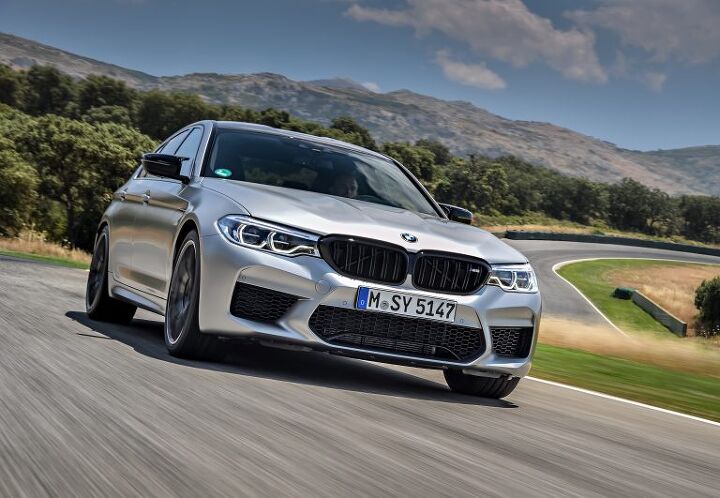

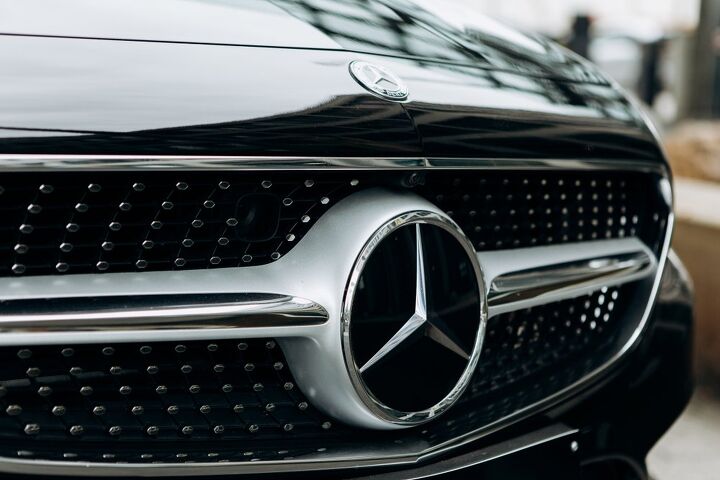




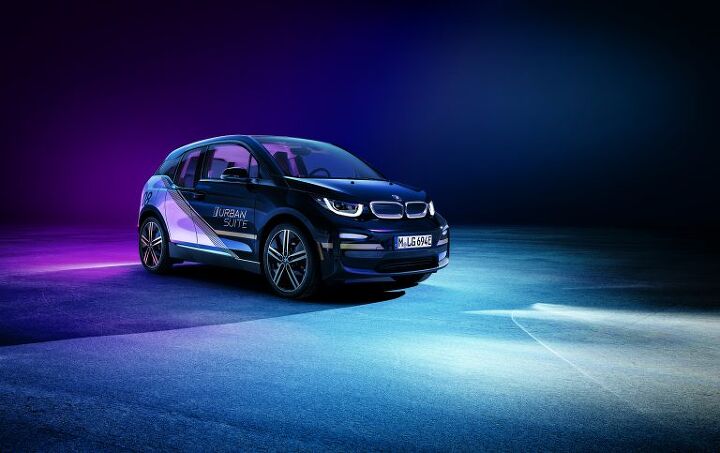


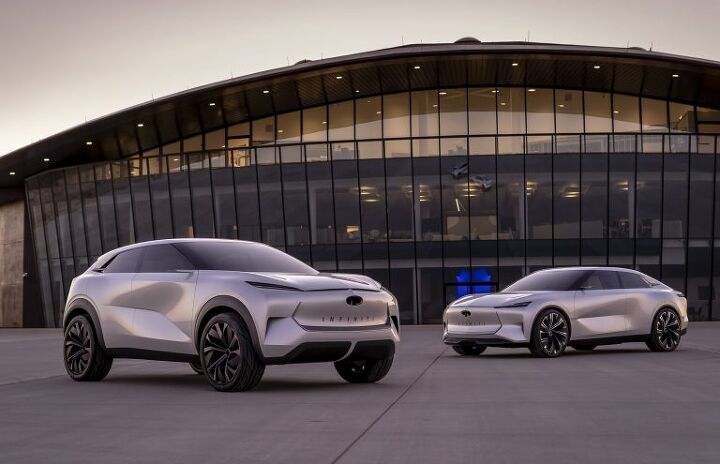



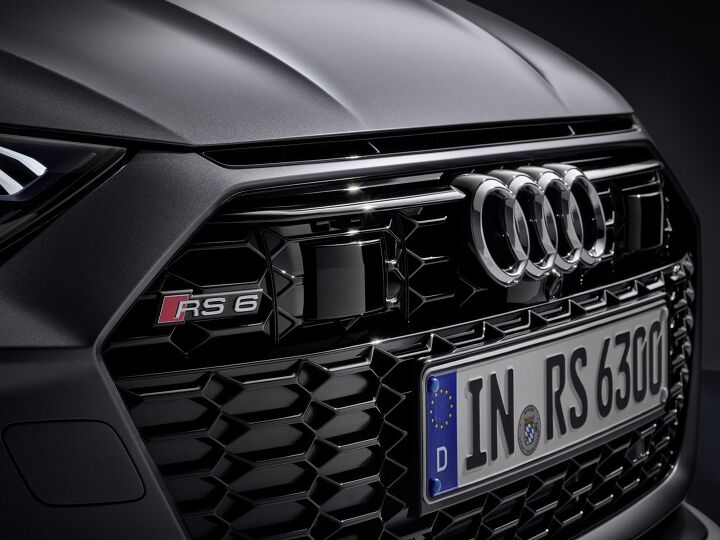

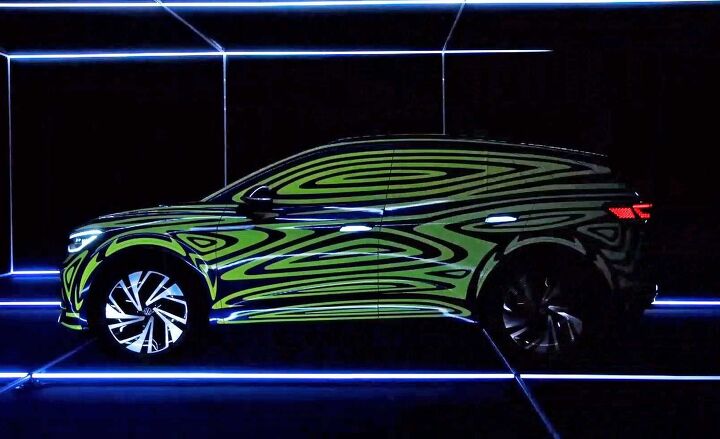


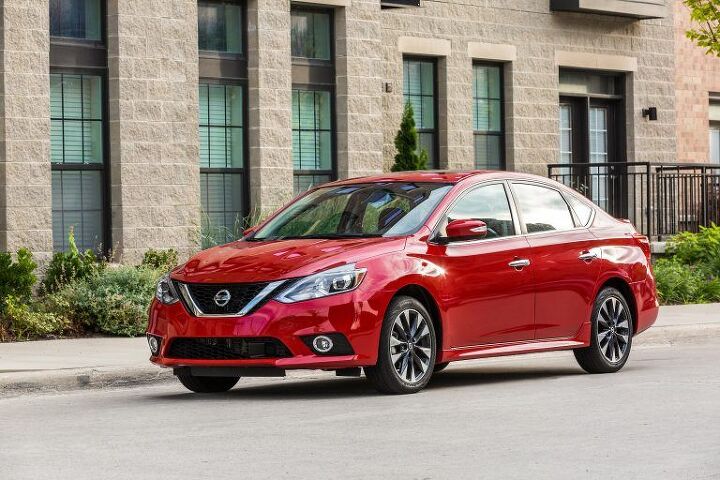

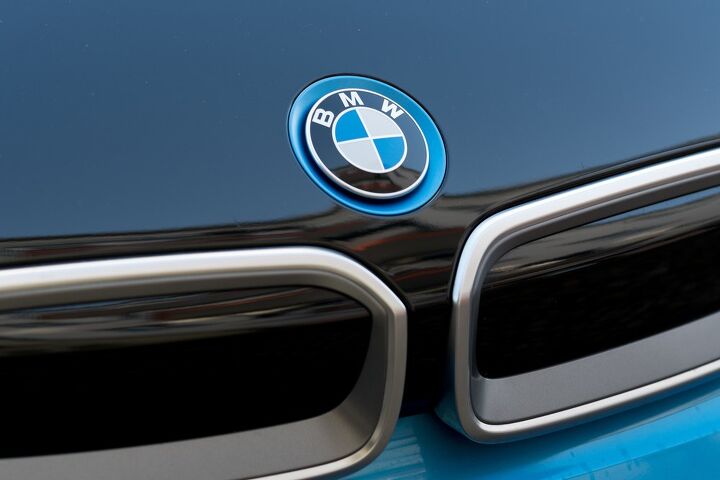

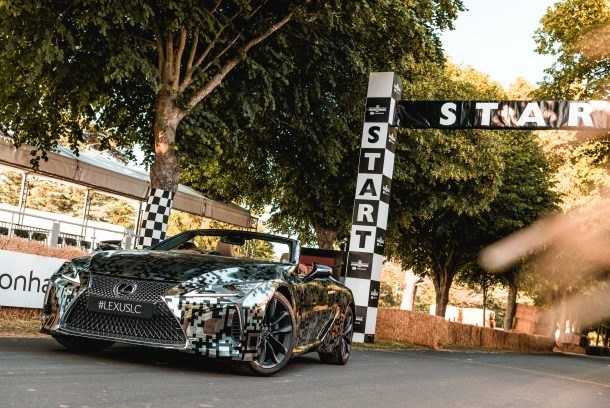

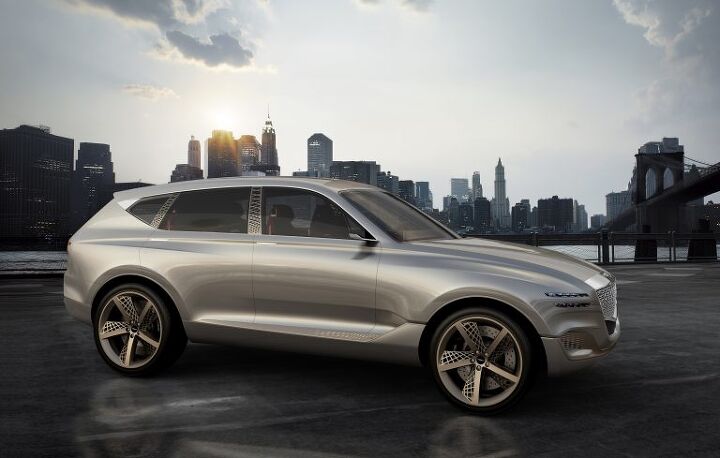
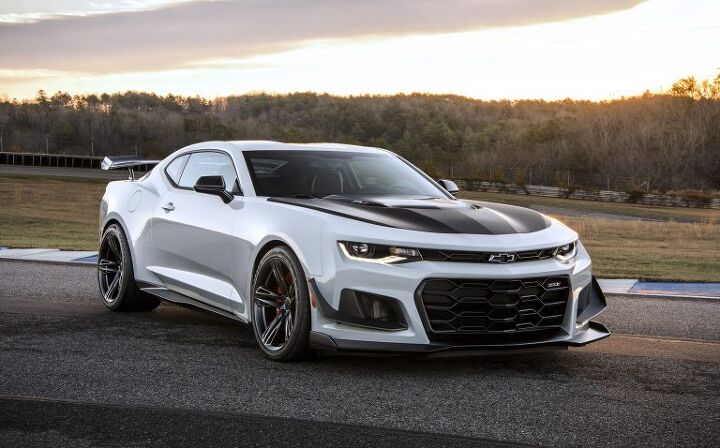
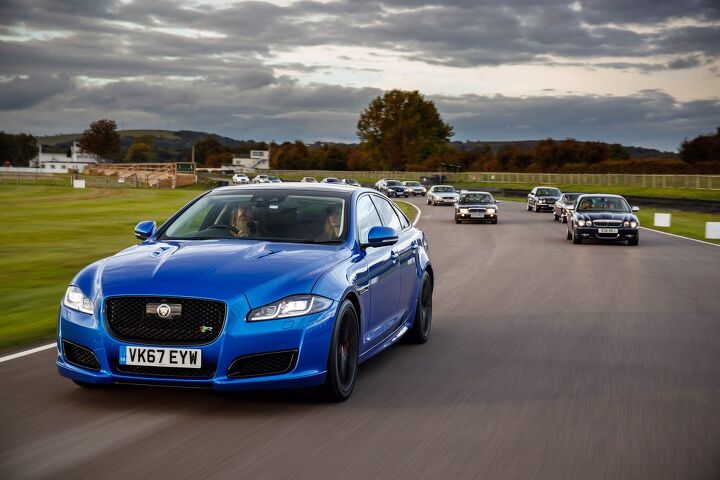
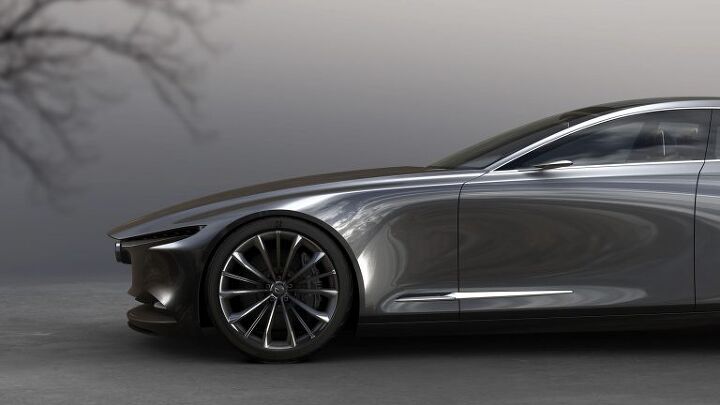
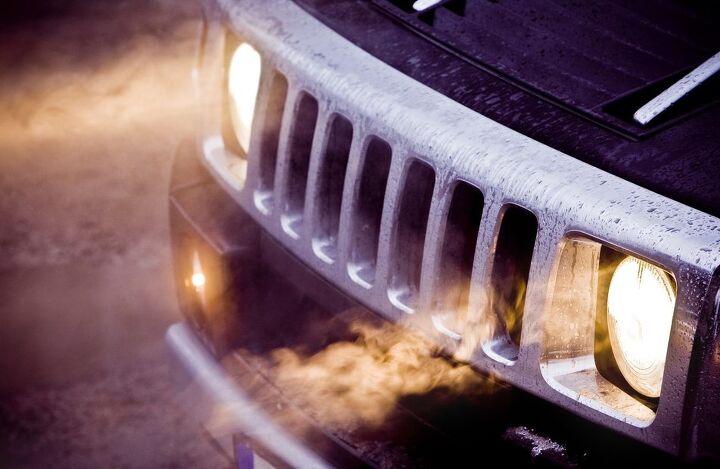
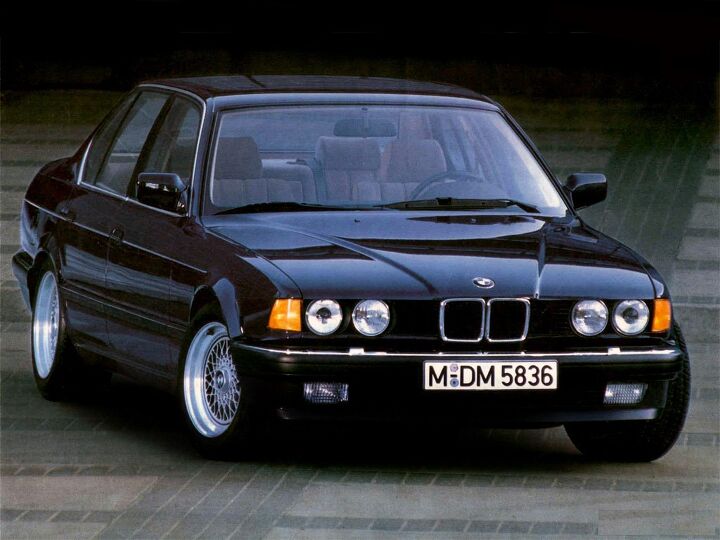





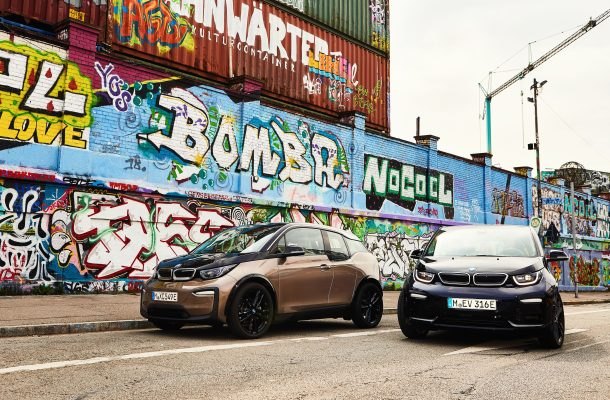



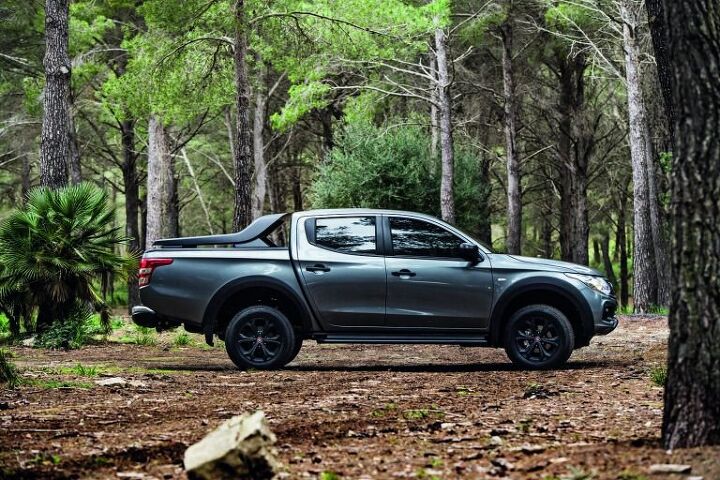

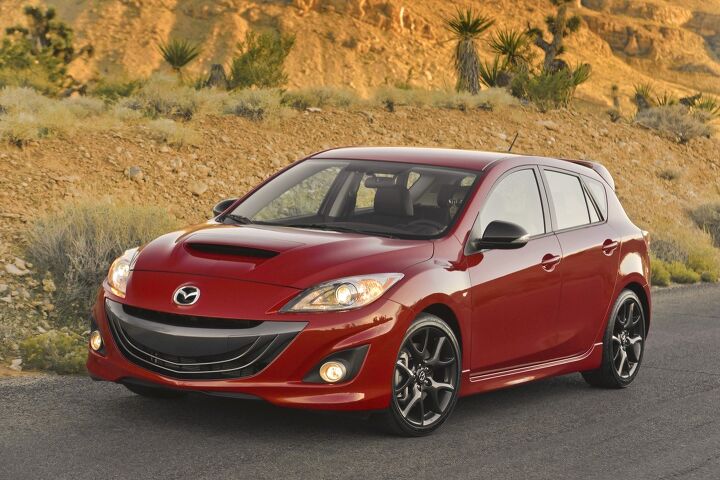
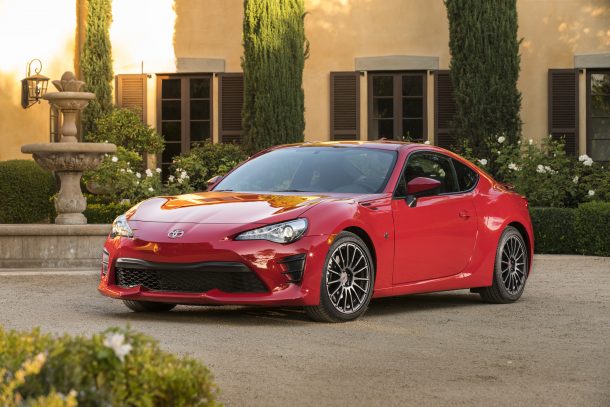


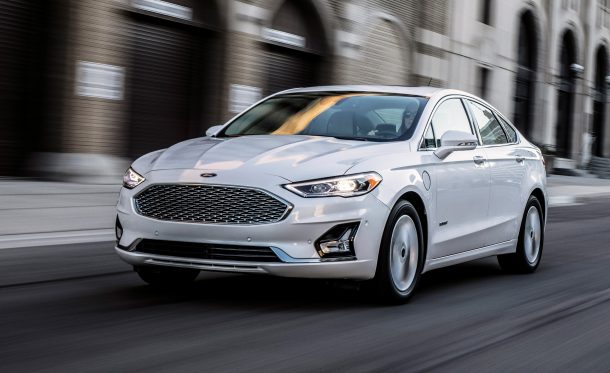





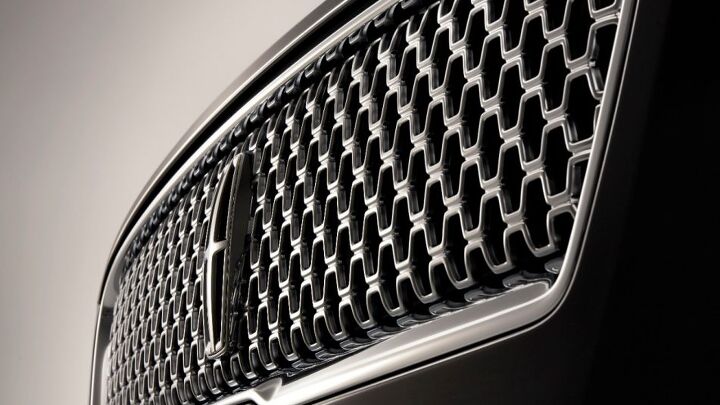




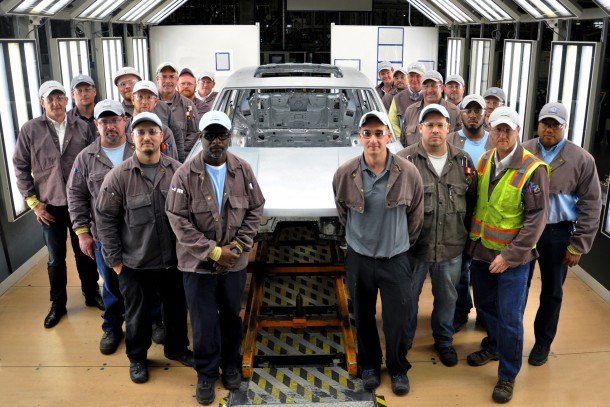













Recent Comments